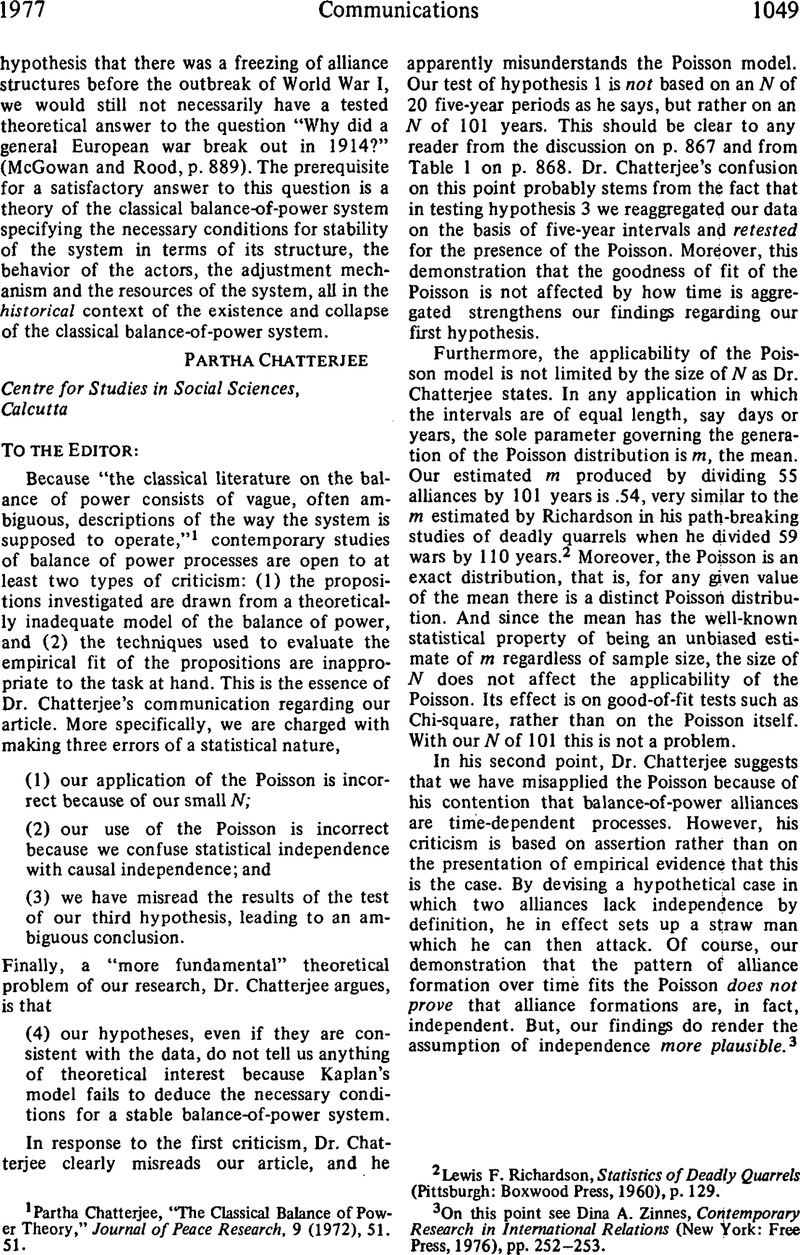No CrossRef data available.
Article contents
[no title]
Published online by Cambridge University Press: 01 August 2014
Abstract

- Type
- Communications
- Information
- Copyright
- Copyright © American Political Science Association 1977
References
page 1049 note 1 Chatterjee, Partha, “The Classical Balance of Power Theory,” Journal of Peace Research, 9 (1972), 51 CrossRefGoogle Scholar.
page 1049 note 2 Richardson, Lewis F., Statistics of Deadly Quarrels (Pittsburgh: Boxwood Press, 1960), p. 129 Google Scholar.
page 1049 note 3 On this point see Zinnes, Dina A., Contemporary Research in International Relations (New York: Free Press, 1976), pp. 252–253 Google Scholar.
page 1050 note 4 Burns, Arthur Lee, Of Powers and their Politics (Englewood Cliffs: Prentice-Hall, 1968), p. 115 Google Scholar.
page 1050 note 5 Ibid.
page 1050 note 6 Chatterjee, “The Classical Balance of Power Theory,” op. cit. This historical context may be present in his recent book, Arms, Alliances and Stability (Delhi: Macmillan, 1975)Google Scholar, but we have not yet been able to secure a copy.




